Mar 25 2008
Around Quito
Meredith has already mentioned the shopping and crazy good deals we saw on things like leather and wool. I thought I’d throw in some pictures of the markets plus a few other things we saw around Quito.
It turns out that Ecuador has many volcanoes – over 25 – and quite a few are still active. A popular one to see is named Cotopaxi; it is one of the highest active volcanoes in the world. We started the day driving there from Quito, visiting the park’s visitor center, and walking around a small lake at about 12,000 feet above sea level to get used to the altitude. It’s always surprising to go to altitude and feel the effects. Walking seems easy at first but exert yourself just a little more and you’re out of breath. We didn’t collapse though so we decided we were comfortable with it and we pushed on down the road.
We drove up to the end of the road which is a parking area at 15,200 feet. The plan was to hike from there up to a climber’s hut where people who are hiking to the summit start out (that would not be us). The problem is, once we got there, it was snowing hard and the wind was blowing. Sure, we could have done it. We’re hearty people. But we’re supposed to be enjoying ourselves, right? Up until now, the day had been gray and we couldn’t see the top of Cotopaxi. So given the winds, we decided to wait it out a bit and see if they would blow some of the clouds away from the summit. It worked out, almost. The picture below is us with about the best view of the mountain we had in the background.
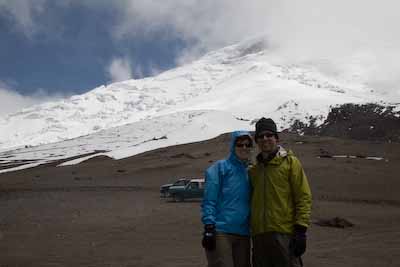
It’s amazing to feel the difference in altitude between 12,000 and 15,200 feet. The parking area was on a gentle grade. I walked the downward direction with no problems. But walking uphill back to the car and I felt like I’d been running for 10 minutes!
After Cotopaxi, we had a late lunch and our guide dropped us off at our hacienda for the night. The next morning, we went to a market in a town named Saquisilí. Most people who visit the Ecuador mainland go to a market in a town named Otavalo. We did that as well but the main difference is that Otavalo is targeted at tourists and Saquisilí is meant for locals. There was more food for sale at Saquisilí and the crafts that were for sale were meant to be used, e.g. pottery for cooking. We felt like Saquisilí was a more authentic experience and highly recommend it to anyone who goes to Ecuador.
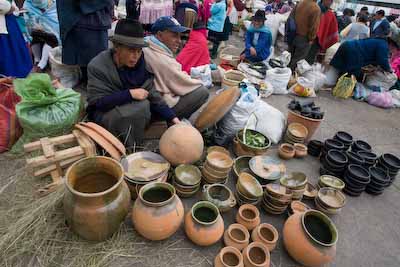
A woman in Saquisilí market selling pots for cooking and storage.
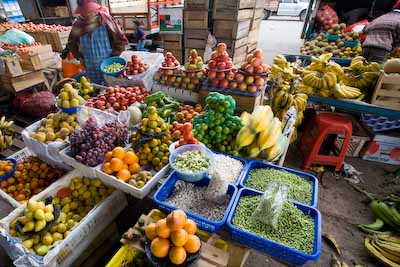
A woman selling fruit and vegetables at her kiosk.
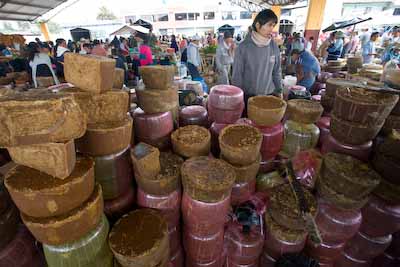
These round “cakes” are the size of large cheese wheels. They’re made purely from sugar cane juice and taste a bit like light molasses.
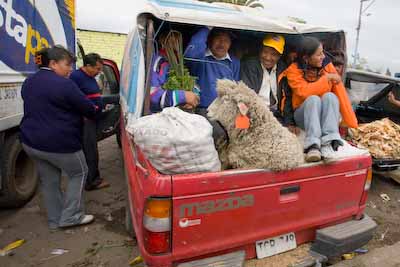
I guess when you buy a sheep, it’s like a member of the family. He has a better seat than the others in the back of this truck.
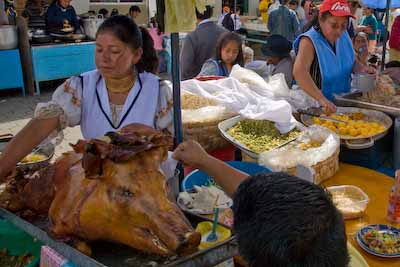
Definitely the place to go if you have a hankering for pig heads.
After the Saquisilí market, our guides surprised us by taking us to a tour of a local rose farm. Many people don’t know this (at least I didn’t) but Ecuador is the world’s second-largest exporter of roses – only Kenya exports more – and most of them go to the United States. We saw all stages of production. We walked through several very large greenhouses where they had a different variety every 3 or 4 rows – who knew there were so many kinds? They then showed us the final stages where they sort them according to stem length, package them, and refrigerate them until shipping. They said they have 12 days from picking a rose to getting it into the customer’s hands at the florist or else it’s too late – the flower is too open.
Roses were in almost every hotel, hacienda, and restaurant we went. Huge bouquets with several dozen at a time were typical. In the US, this would be prohibitively expensive but we were told roses cost about a dollar each down there.
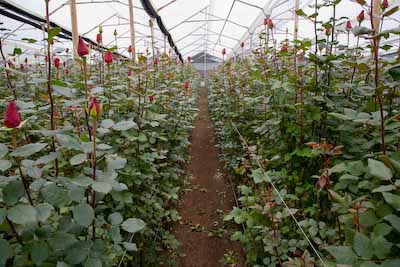
Looking between the rows of roses in a greenhouse.
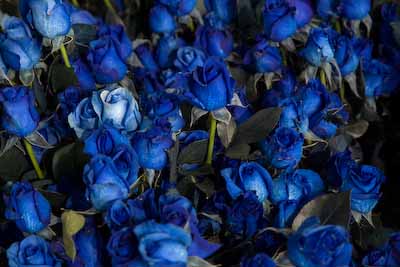
Blue roses. I thought these were supposed to be real but it turns out they dye them to be that color. The country where they’re most popular: Japan.
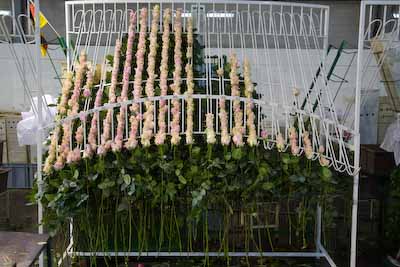
A sorting rack in the packaging area. The different heights of each column make it easy to sort stem lengths.
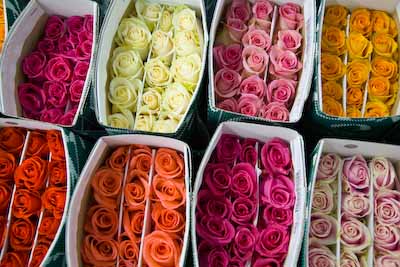
Roses packaged and ready for shipping.
We’re very glad that we chose to spend time exploring the Ecuadorian mainland. It’s hard to say you’ve been to Ecuador if you’ve only seen the Galapagos.
– Dave
No responses yet